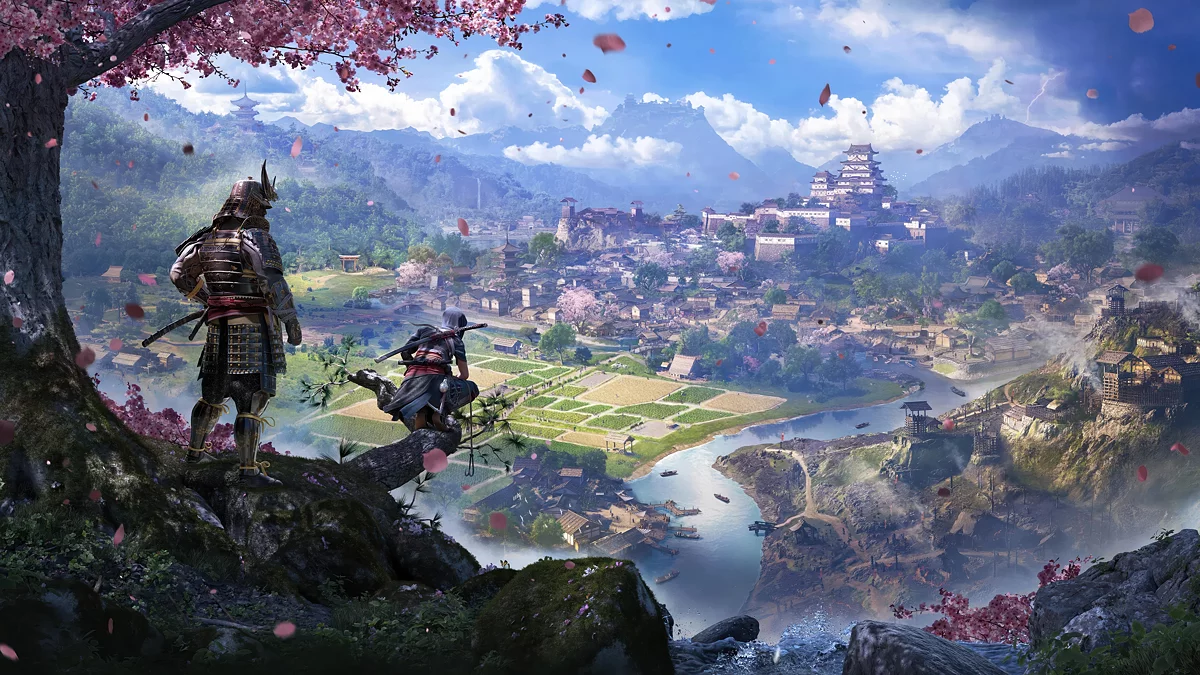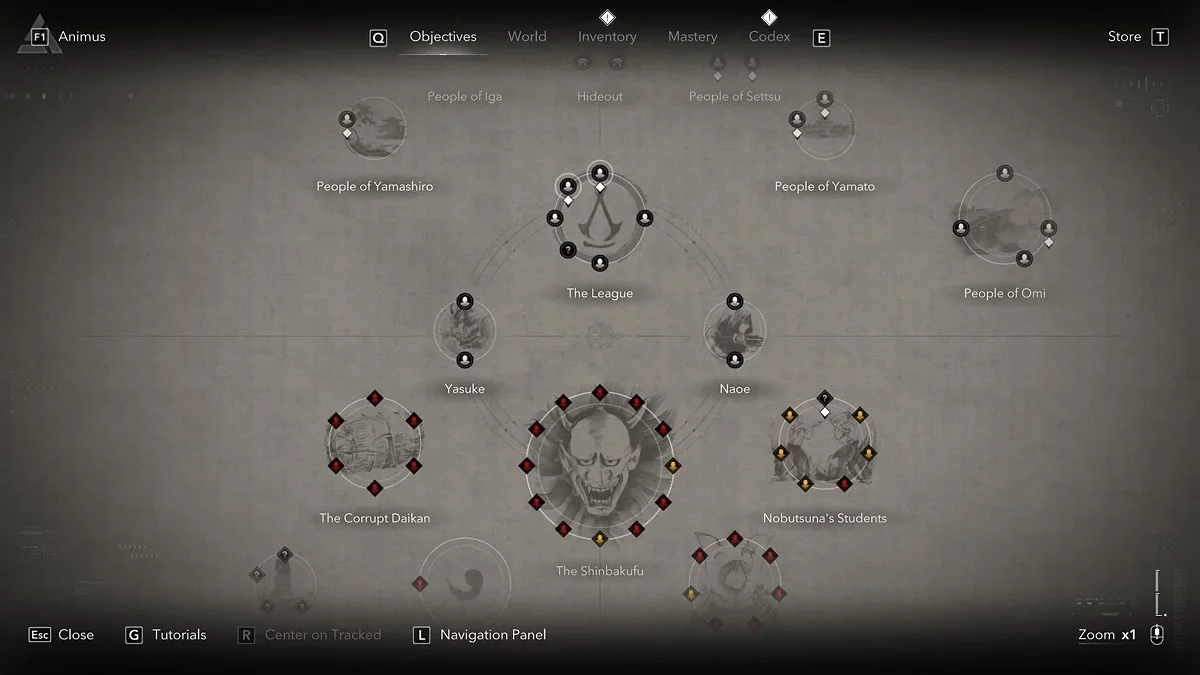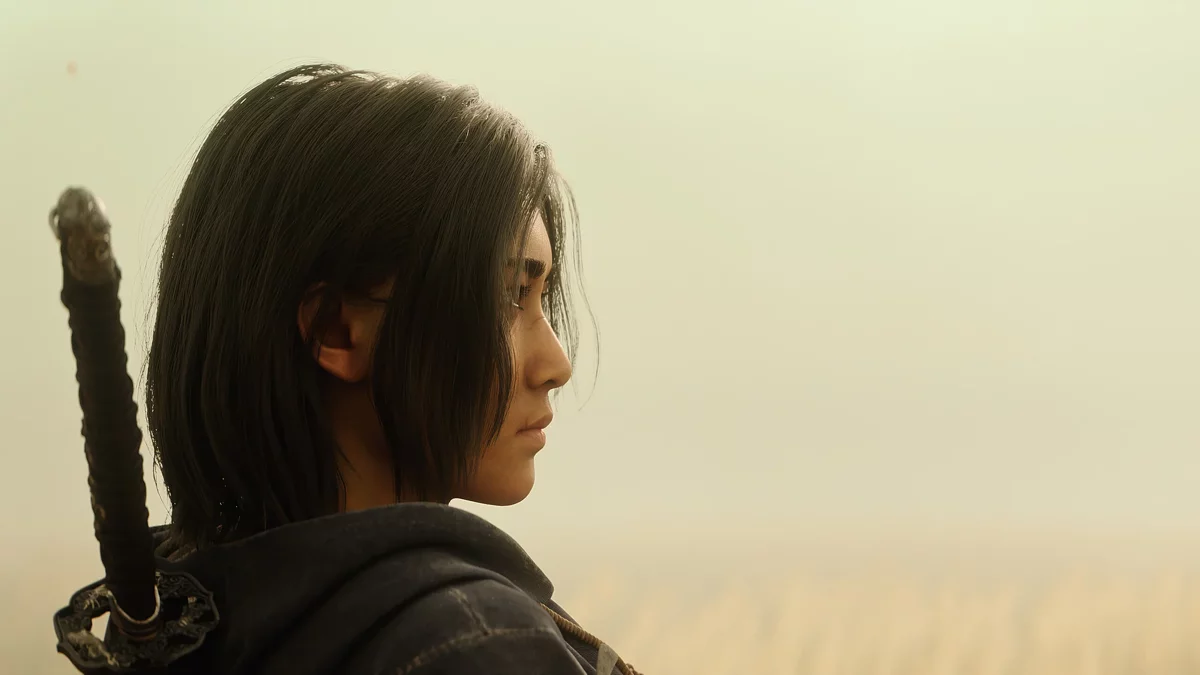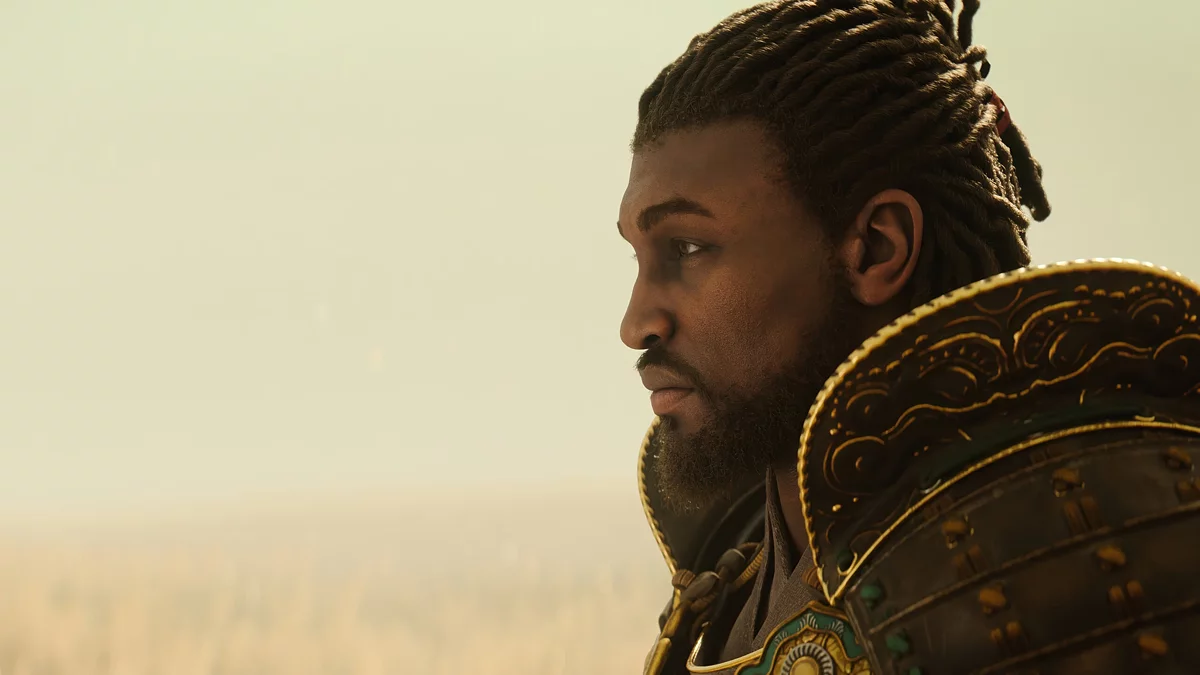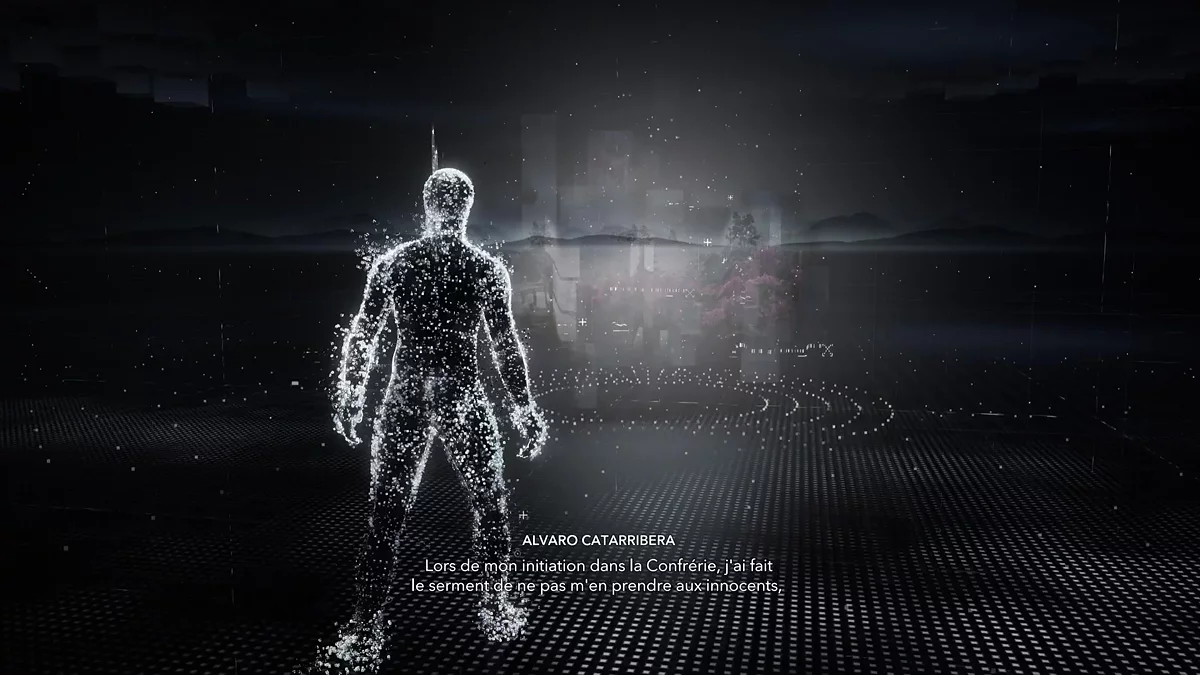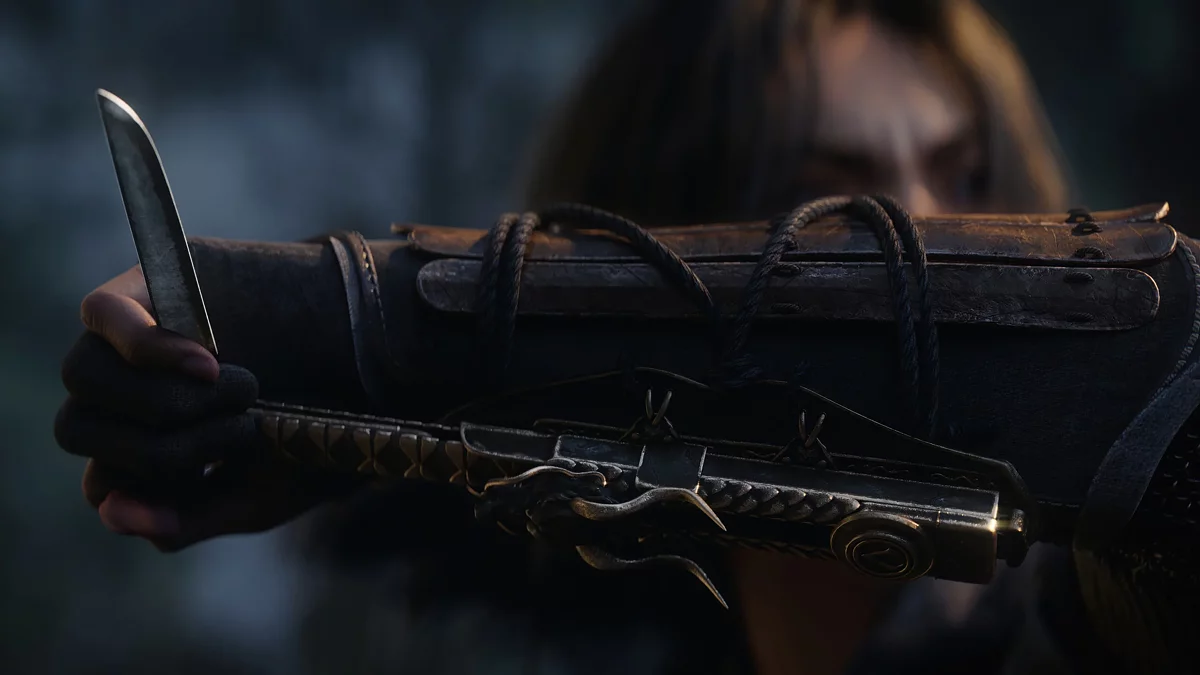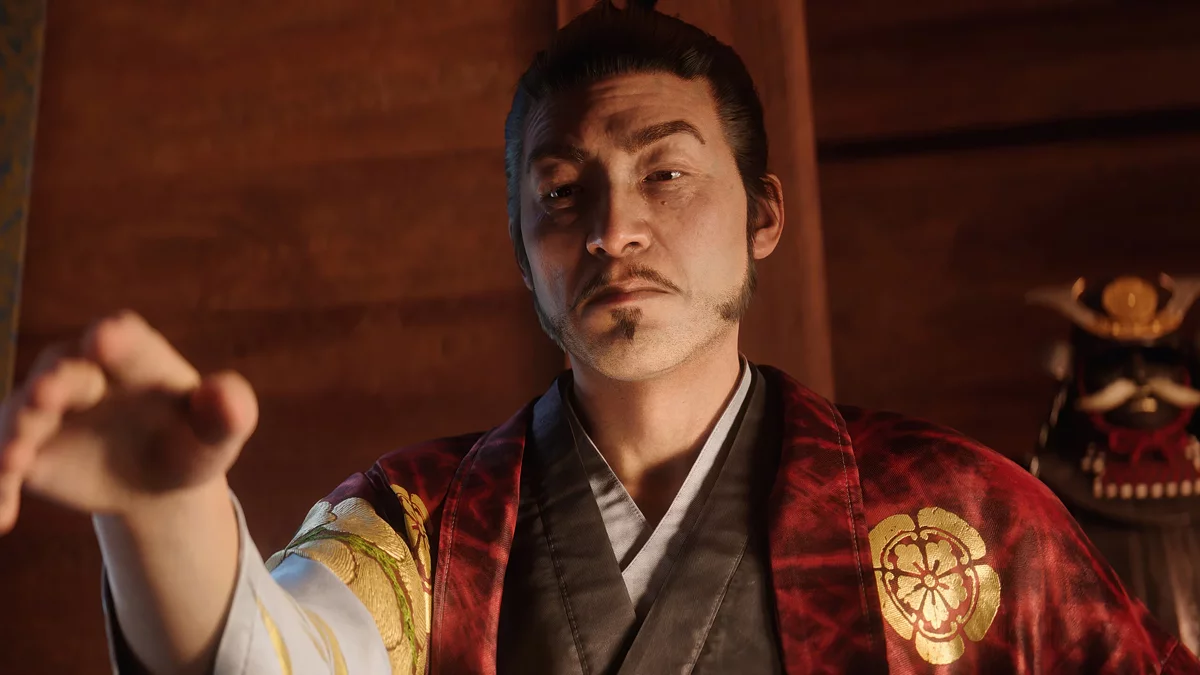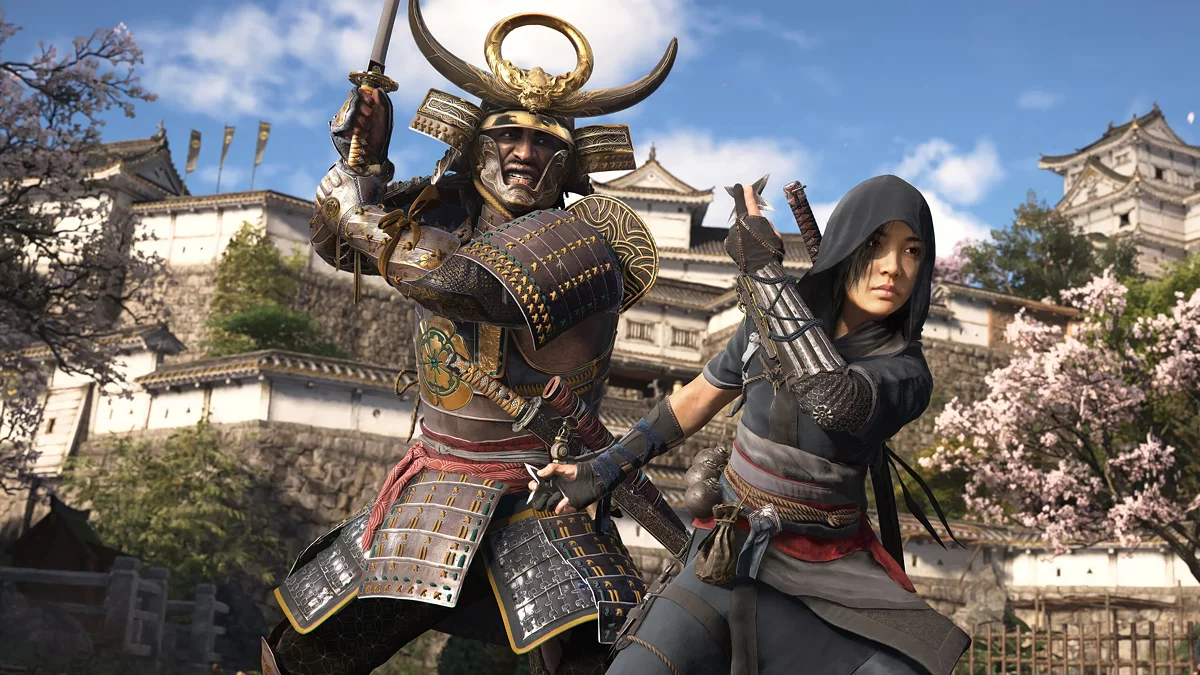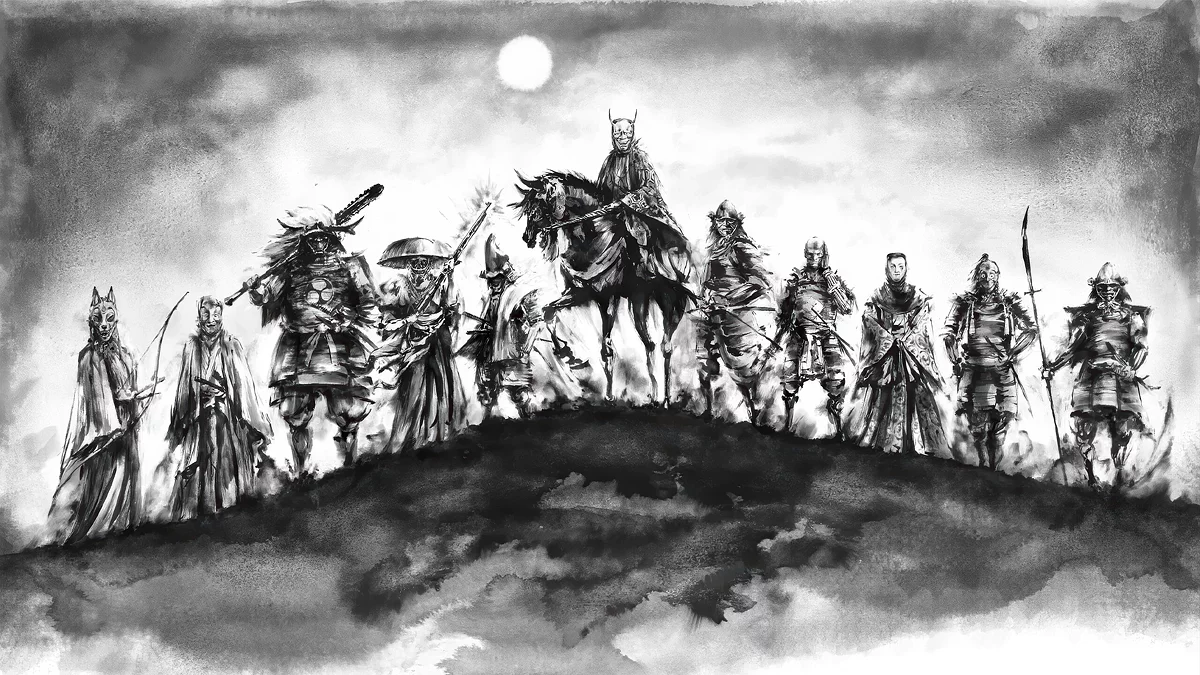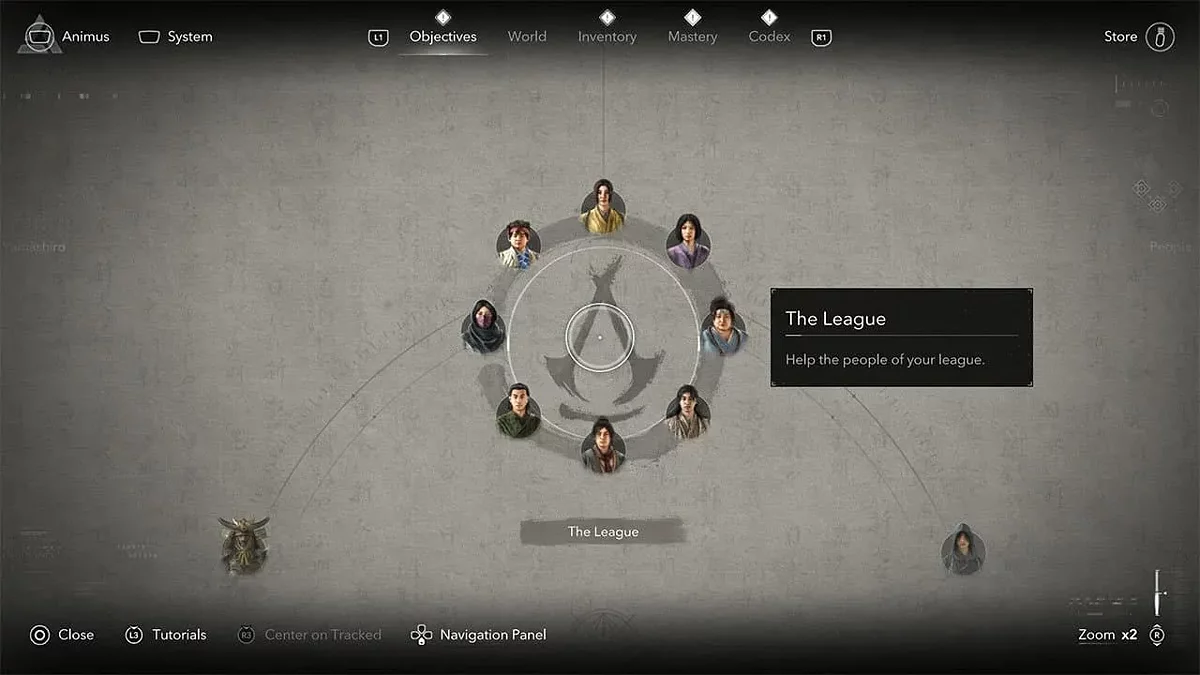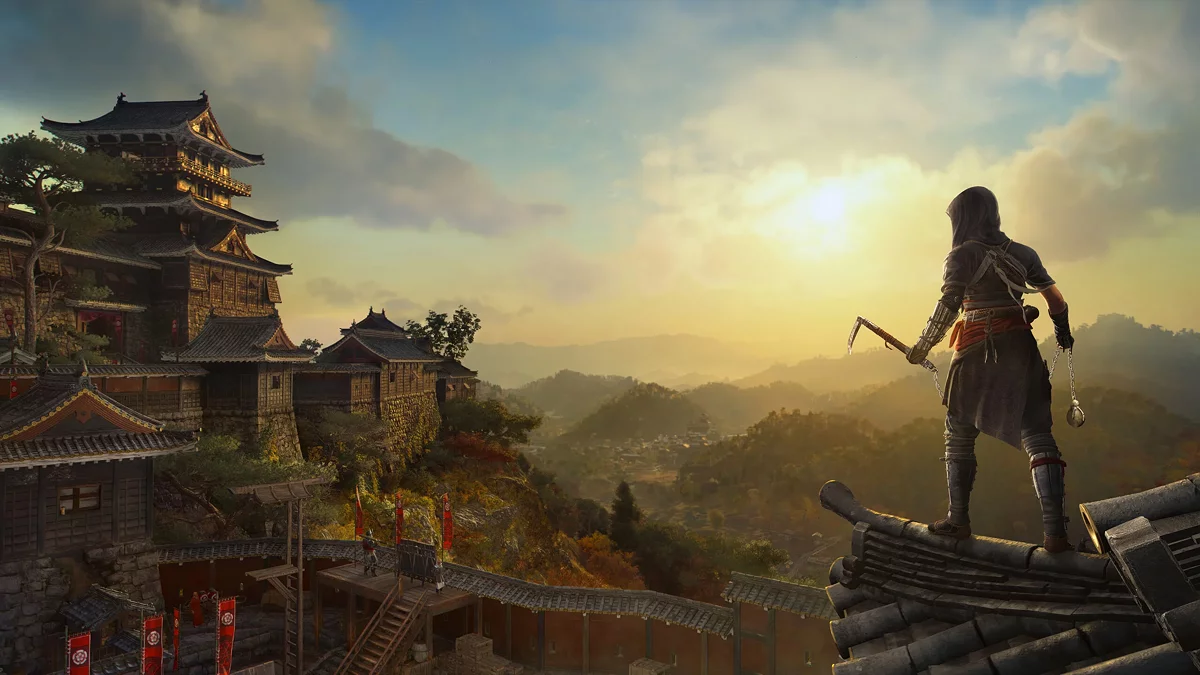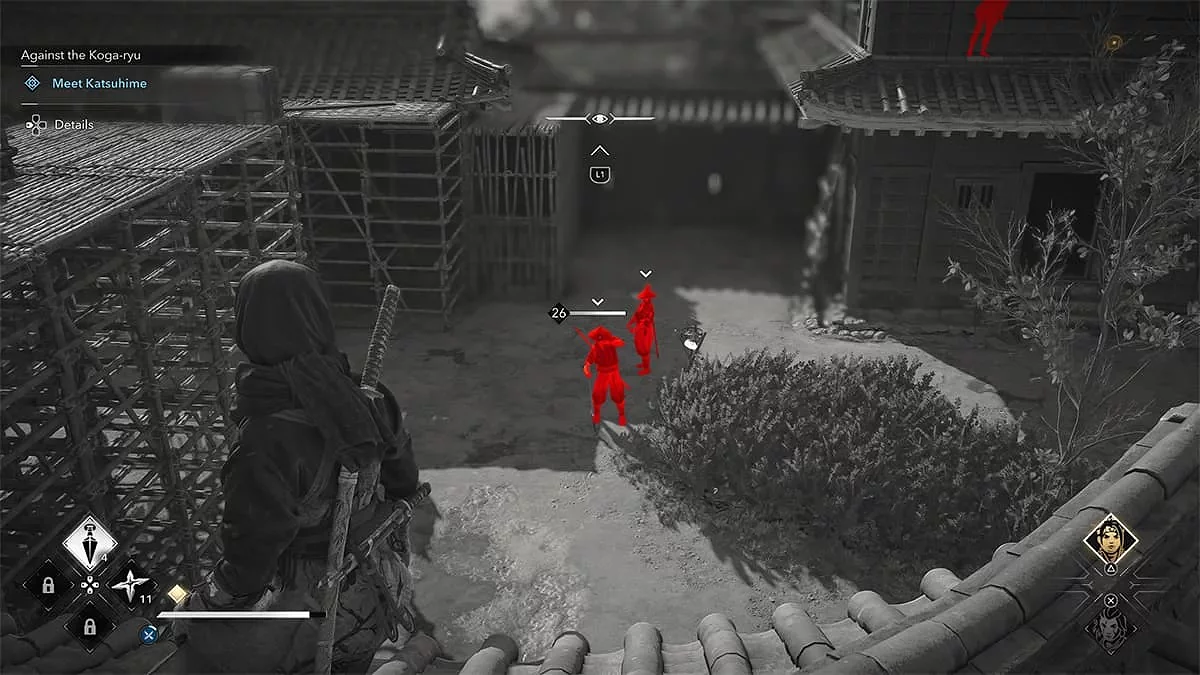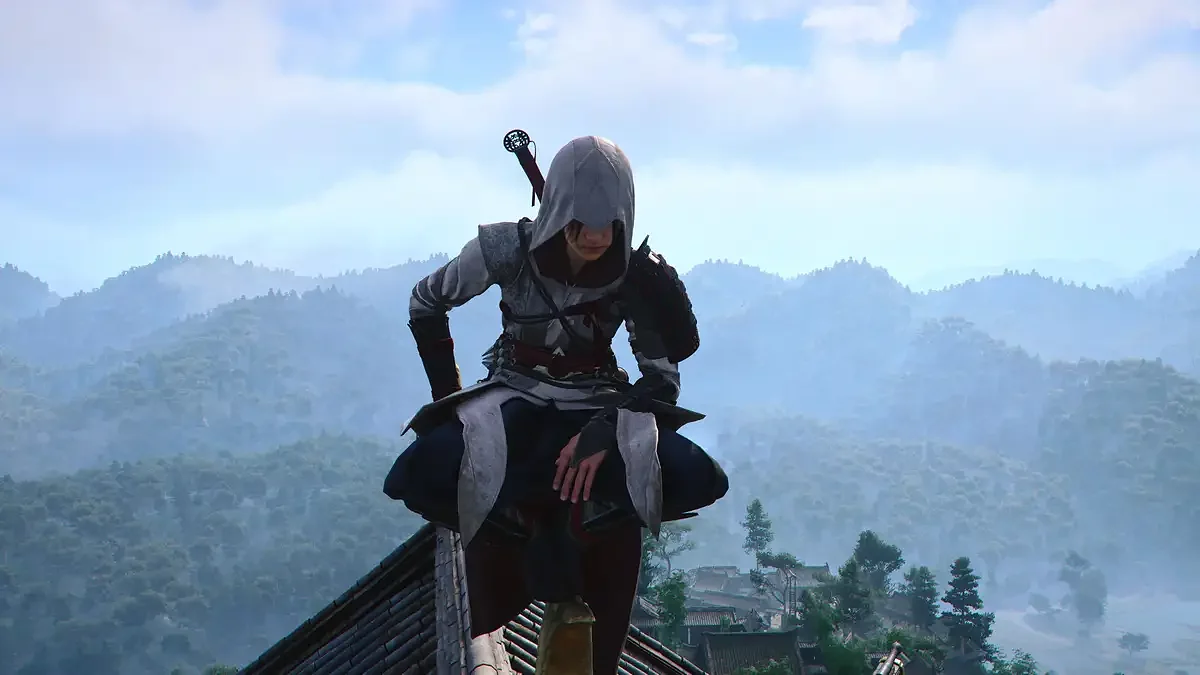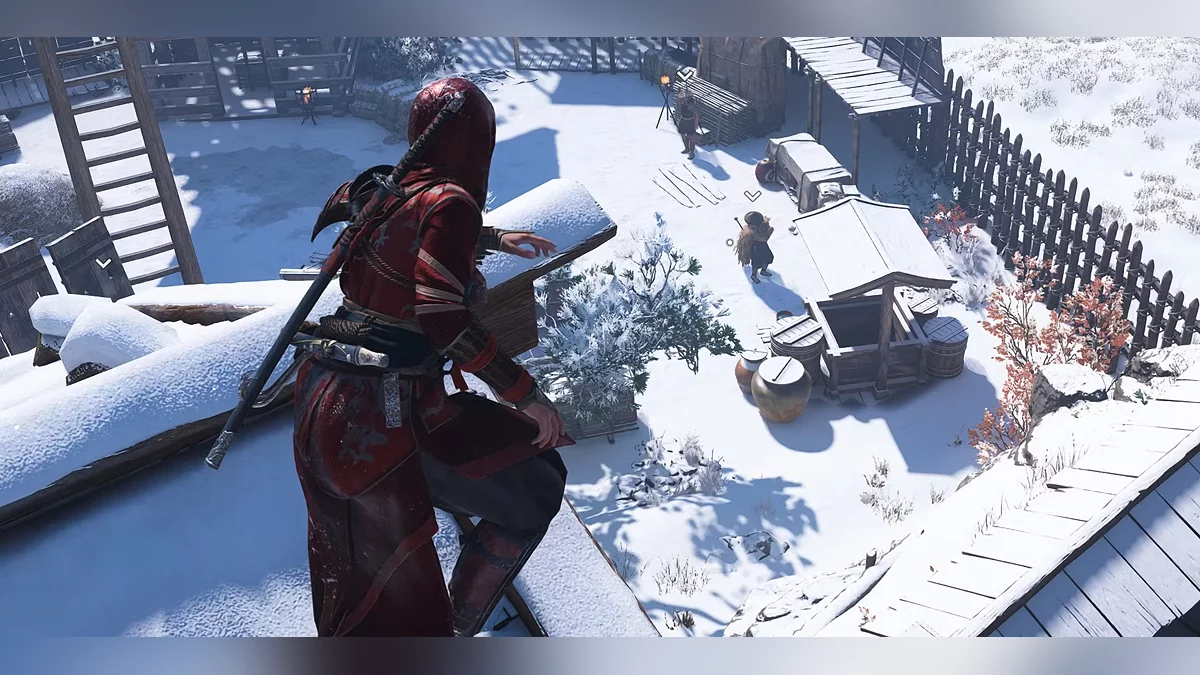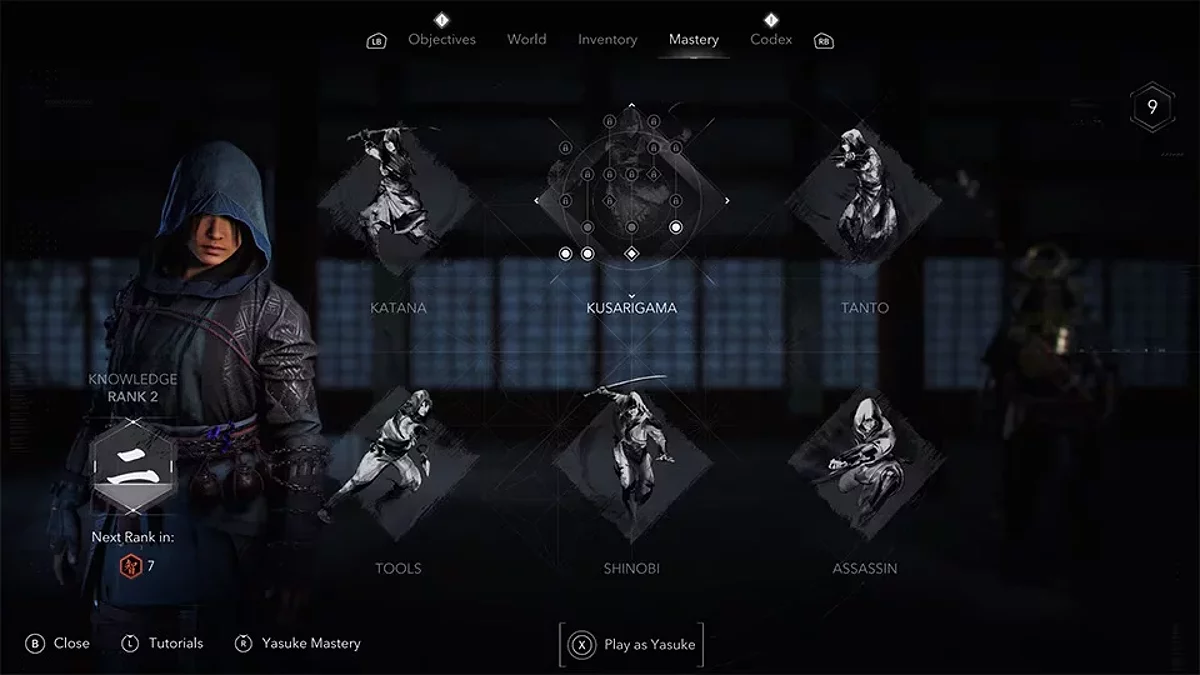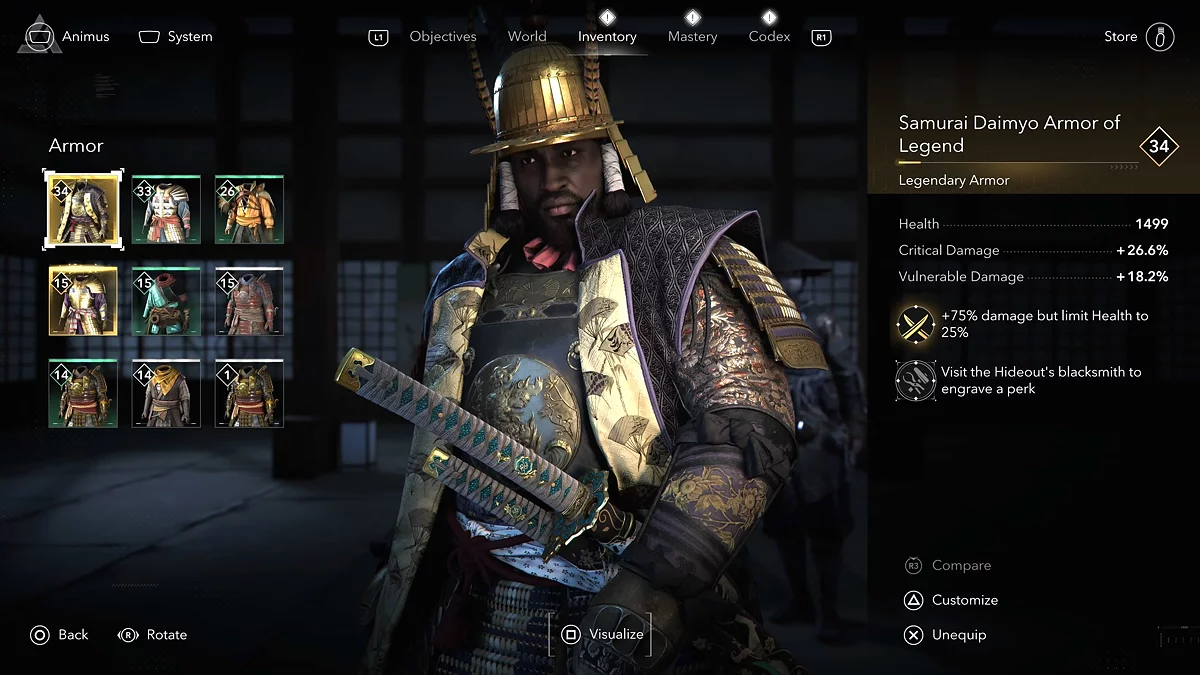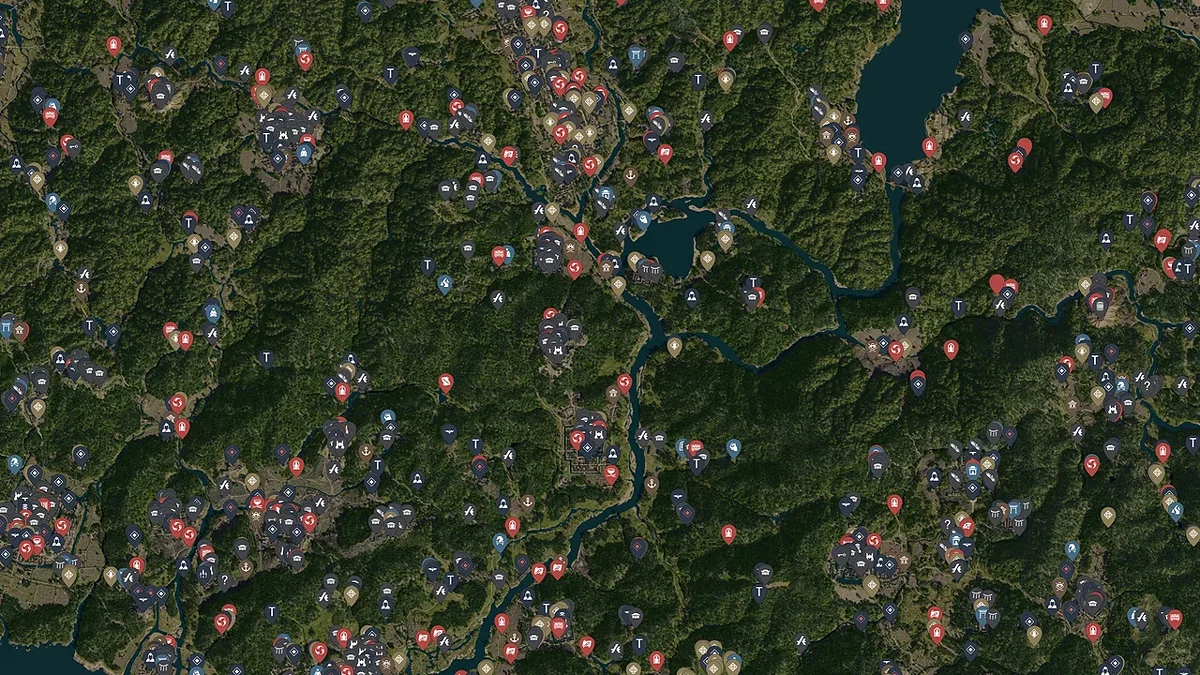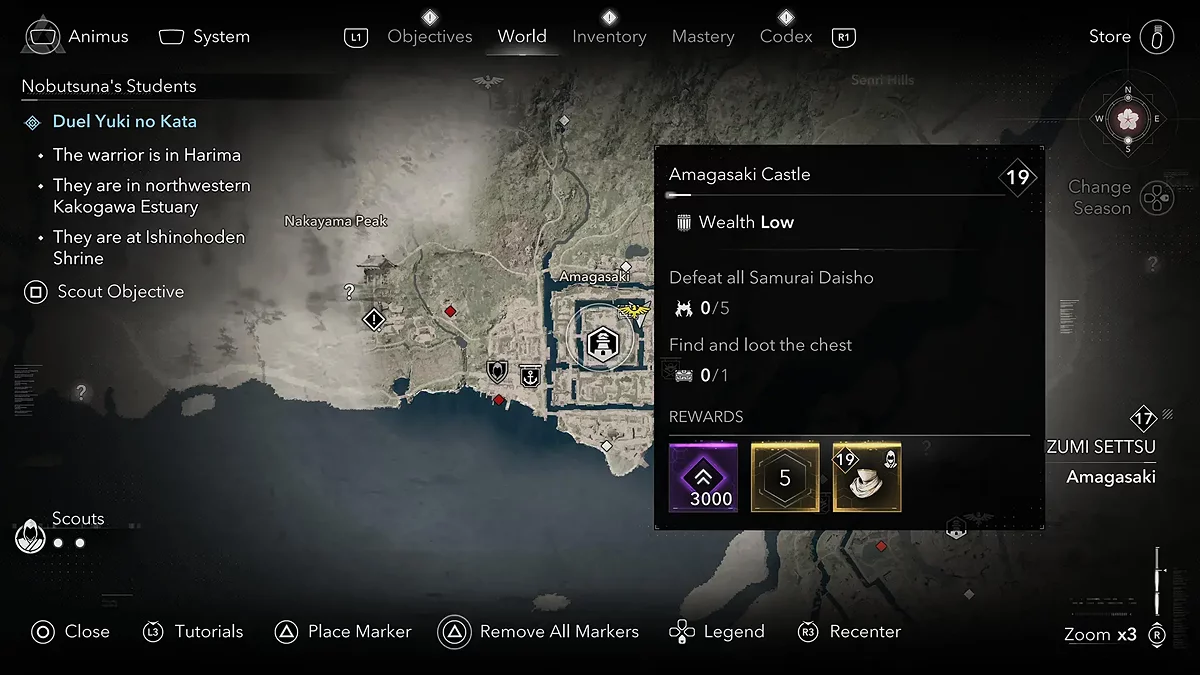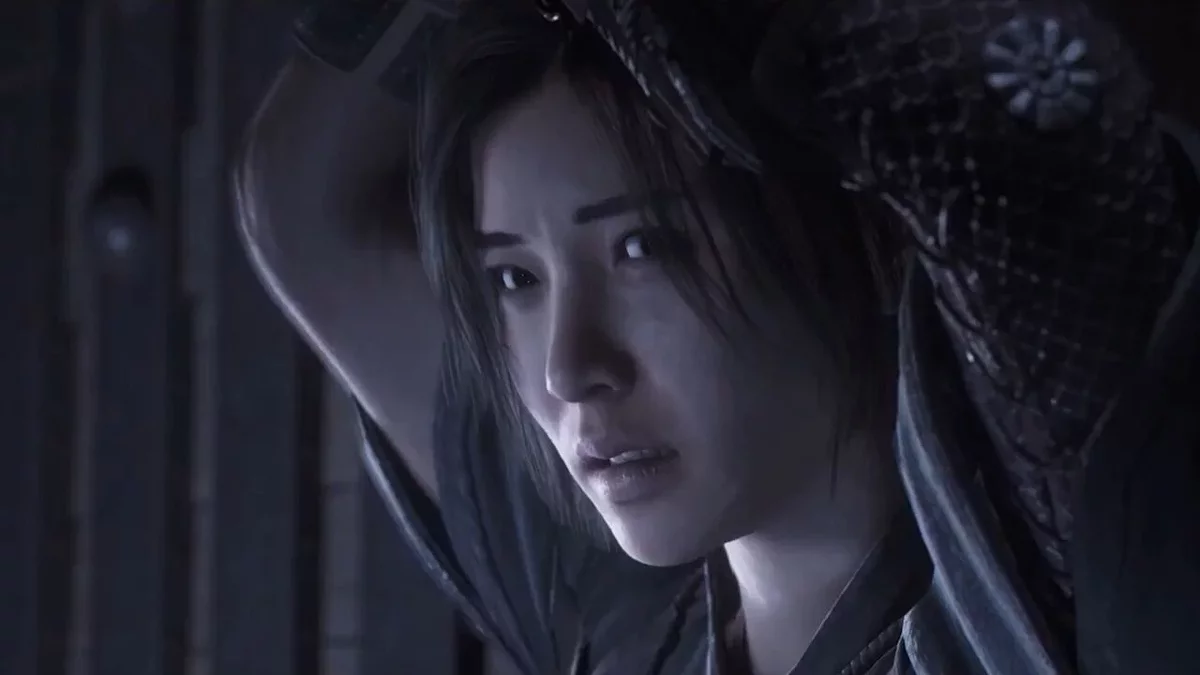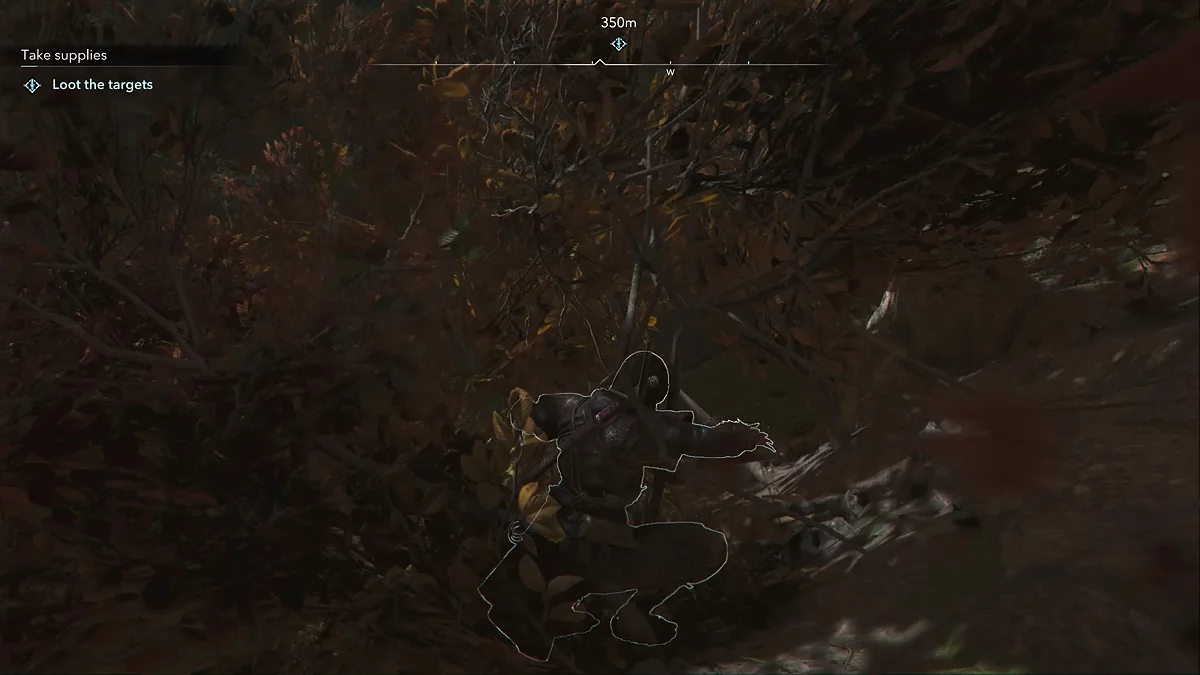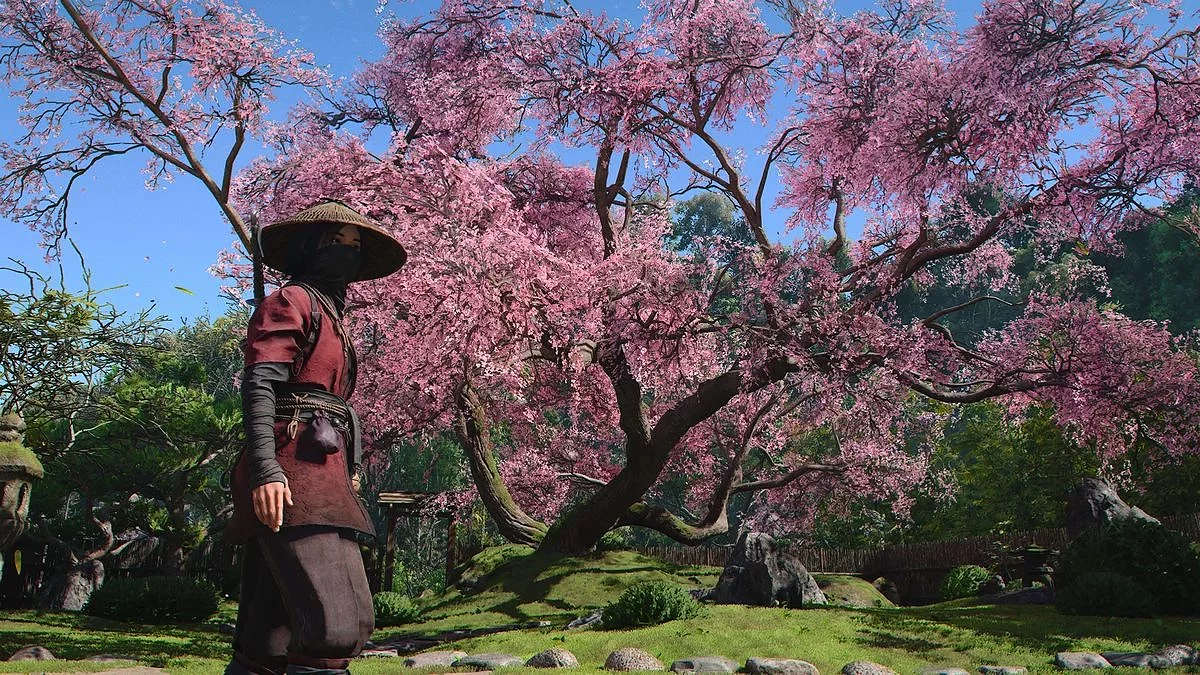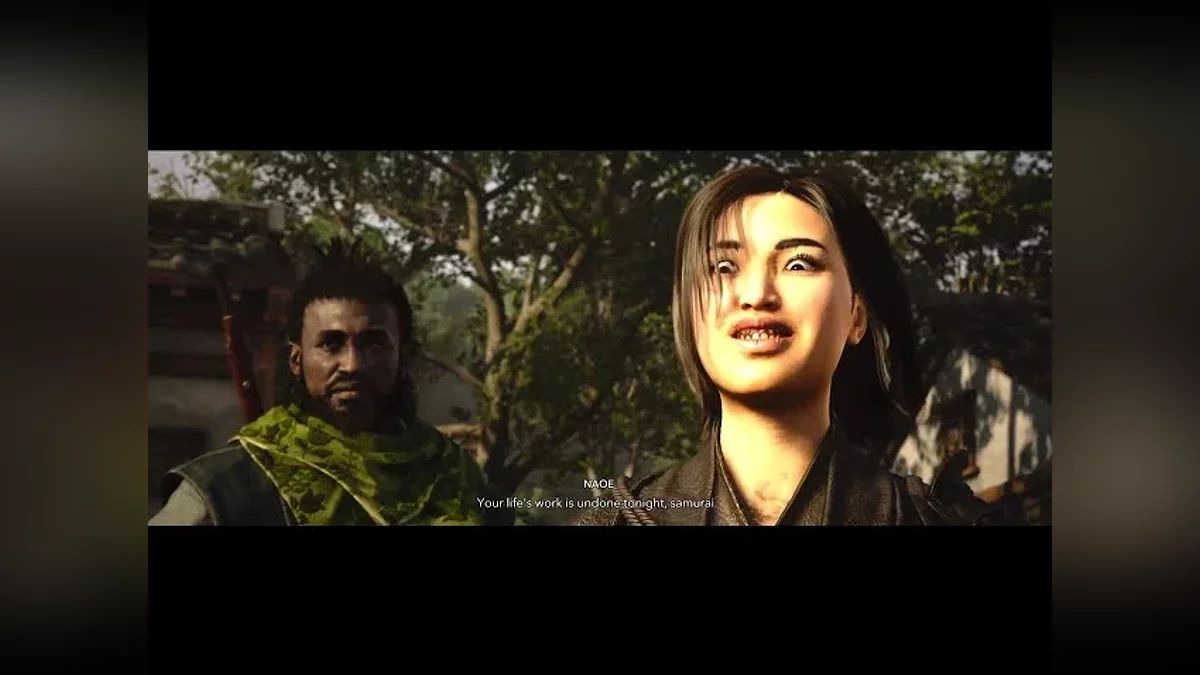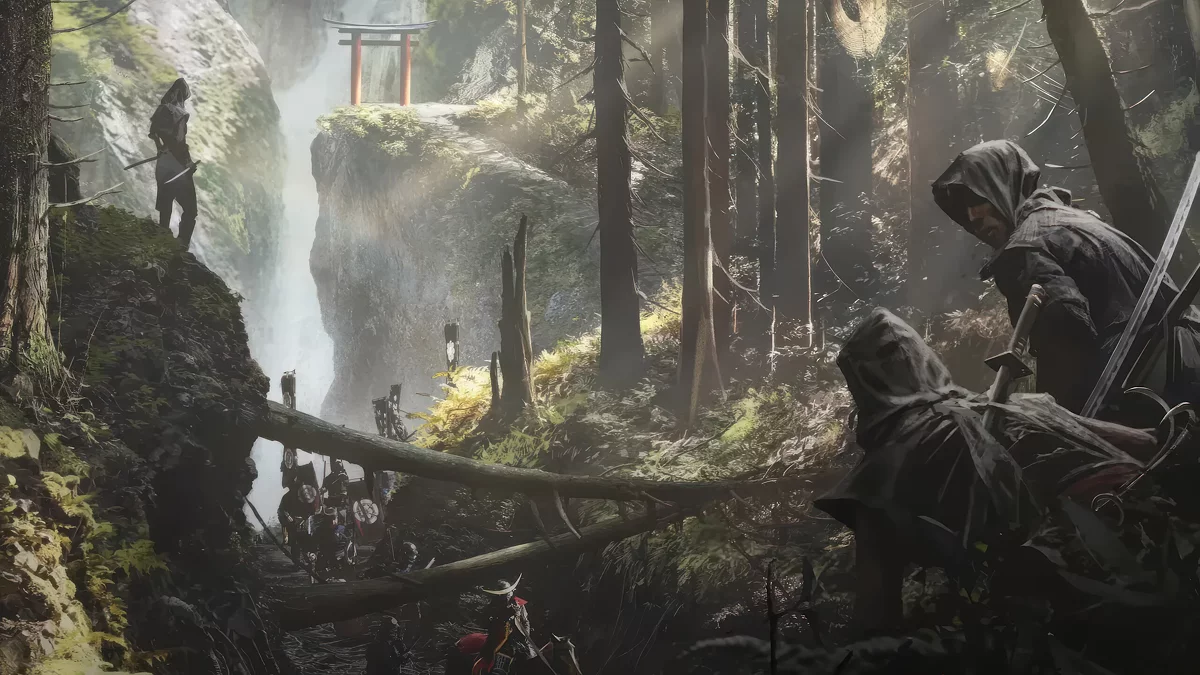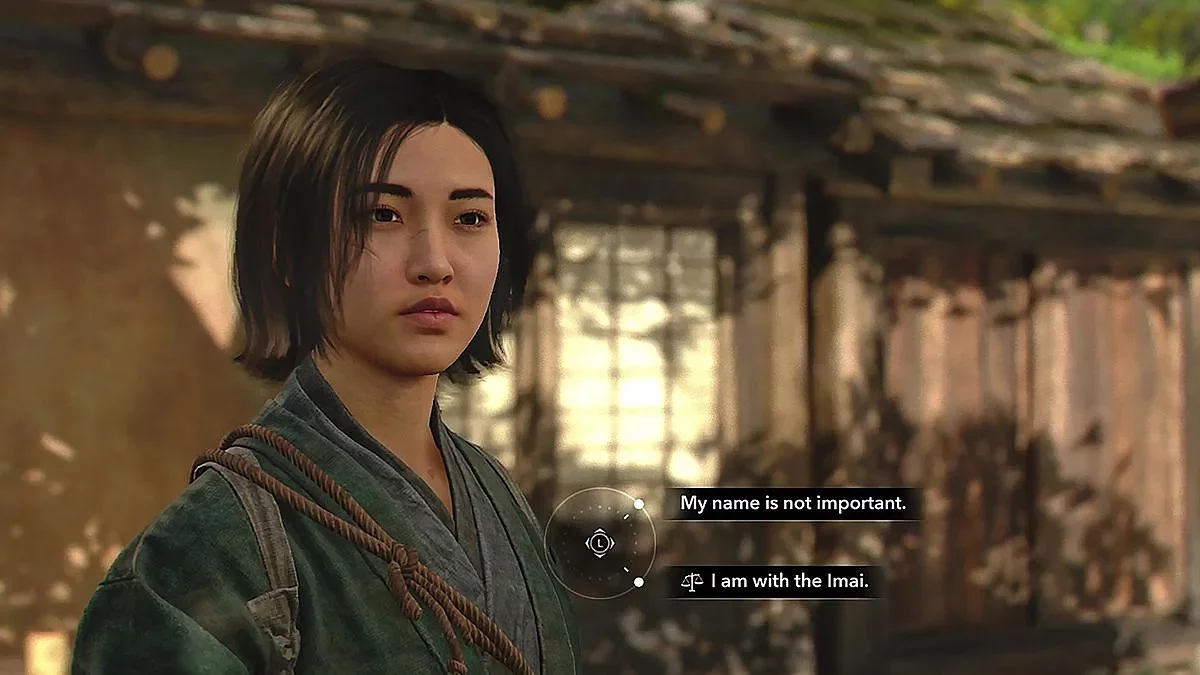Assassin's Creed Shadows Review — Did I ever tell you what the definition of insanity is?
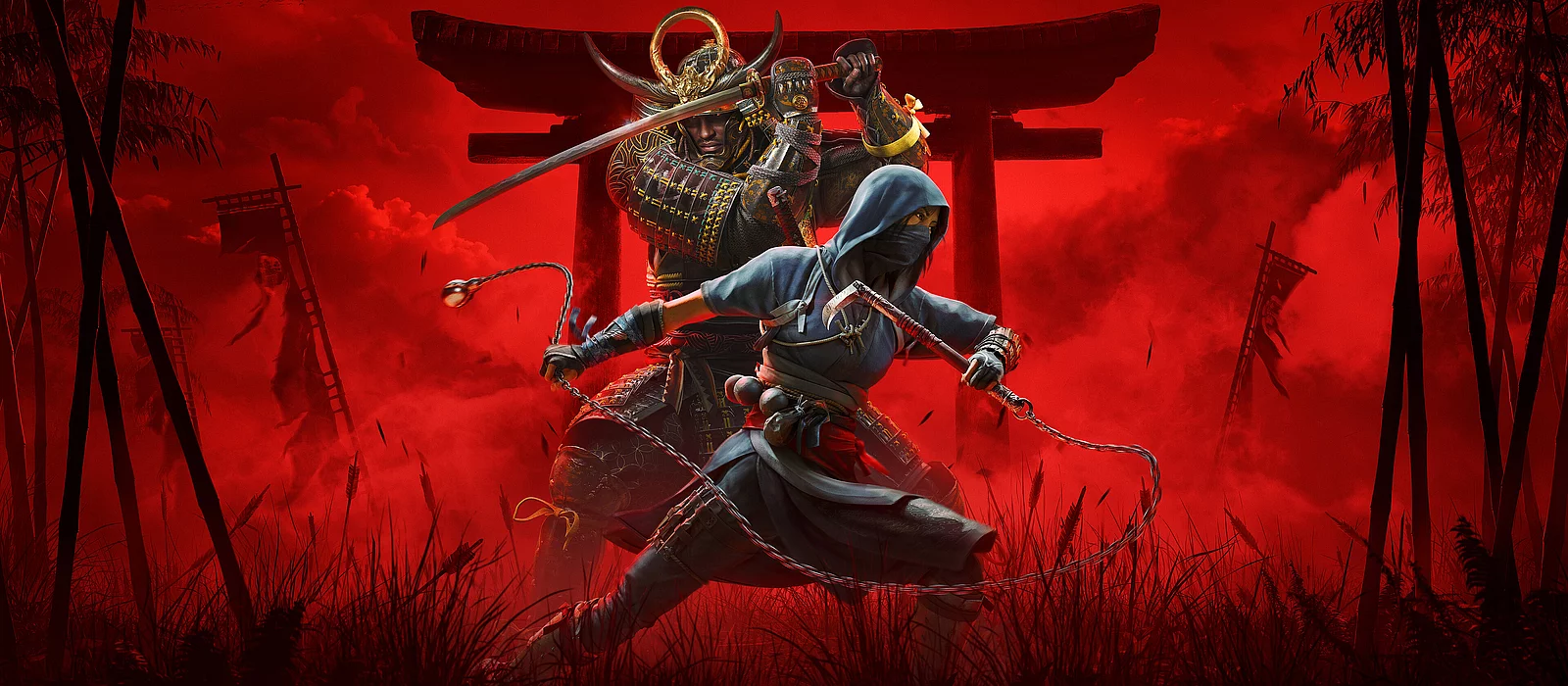
Assassin's Creed Shadows — Ubisoft's swan song. This game is the company's last chance to stay afloat. After numerous failures and scandals, the studio's bosses made an unusual decision for themselves — to give developers time for polishing. The result was an unprecedented event — the delay of a fully ready-to-release game. After the release, prominent representatives of the higher internet unanimously declared that we have the "best Assassin" before us, and the project completely outshines its closest ideological competitor — Ghost of Tsushima. Among our editorial team, there is an author who has played absolutely all the games in the Assassin's Creed series. Moreover, he is a big fan of the story of Jin Sakai from the island of Tsushima, so who better than him to responsibly answer the question — is Assassin's Creed Shadows really the breakthrough everyone was waiting for? Let's begin.
Synchronization Process
I am indeed one of those crazy people who have played absolutely all the parts of the much-suffering Assassin's Creed series. Moreover, I have completed them. It just so happened that I didn't quite like the move towards RPGs that Ubisoft chose in 2017, but I had to accept the new face of the projects and come to terms with it. However, this does not mean that I stopped ignoring the numerous problems that have become an integral part of the trilogy about Egypt, Greece, and medieval England under the Viking yoke.
Assassin's Creed Shadows — the ideological successor of everything that has recently been closely associated with the stories of not-so-stealthy assassins. Let's be honest, few expected anything different. This concept of storytelling and open world might impress those who usually spent five to six hours in the prologue of projects about people in white outfits and then quit due to being too busy. You know, those patriarchs of the higher internet. However, if you, like me, have poured nearly 1000 hours in total into Assassin's Creed Origins, Assassin's Creed Odyssey, and Assassin's Creed Valhalla, Ubisoft has almost nothing to surprise you with.
This review could have ended here, but as I was playing the new release and reading other users' reactions, one aspect caught my attention. Many gamers unironically compared Assassin's Creed Shadows to Ghost of Tsushima, and not in favor of the latter. Allegedly, Ubisoft's creation has a better combat system, the stealth is just right, the artificial intelligence is not as dumb, and the plot... well, it's just a blast. This intrigued me, so I decided to analyze the "best assassin" in comparison with the game that was long called the "proper assassin in Japan" (let's not forget about that). We will break down each element and see how Sucker Punch Productions tackled the same tasks and who ultimately did it better.
Ripples on the Water
Let's not break tradition and start with the most controversial aspect — the story. If you've played previous projects, including Assassin's Creed Mirage, you know how it's set up. There's a separate menu with circles that immediately shows you who to kill and who to talk to before revealing the true identity of the next pseudo-Templar. In Origins and Odyssey, the concept didn't work very well. The kill list was divided into mandatory and optional. You could easily complete the story without clearing the entire network of villains. There was also the opposite situation, where while wandering through yet another settlement, a completely random NPC with a golden glow would catch your eye through eagle vision. After elimination, it turned out to be one of the enemies. Just like that.
The search for clues or information was not properly explained, so there was little motivation to engage in it. Moreover, the main plot could only be indirectly related to all the villains. In Mirage, the idea was brought to its highest point. There is a limited number of targets, but to know their names for sure, you must complete a series of preparatory tasks. Each of these provided a new clue.
The story of Shadows exists in the same form, but the main problem is not in the notorious and hackneyed circles, but in the premise and presentation. We are seeking revenge once again, and our vengeance will be terrible. Only now, it is not because of the death of a son or the entire family, but a father. Remember the premise of the very first game, where Desmond found himself somewhere unknown for reasons unknown, and then Altair failed a contract due to his own overconfidence. Think about the third game, where the initial character turned out to be our father, an antagonist, and a Templar. In Assassin's Creed Unity, Arno grew up in a Templar family and was in love with one of them. There are good examples, so why repeat this death of fathers and families again?
Honestly, I find it hard to imagine a lazier premise. I've come across opinions that the story, especially its beginning, turned out to be heartfelt and even emotional, but my only reaction to such words is — seriously? You have to be completely detached from the world of video games, books, and movies to consider the death of a beloved father a good premise. And there's no second layer in the story, no depth or events that allow you to look at the situation from a completely different angle. A group of super samurais in masks kills dad, now we kill them, that's it.
And those masks. I don't know how the Templars managed before Assassin's Creed Origins without hiding their faces. Because since then, all the antagonists do is put on mysterious outfits to make it hard to recognize them. Once this trick worked quite well, but seeing it so many times in a row is, excuse me, an insult. It's even surprising how the writers managed to build stories in Assassin's Creed before the Templars started hiding their appearances. And yes, one could argue that the entire, now quadrilogy, is actually the chronological beginning of the proto-assassins and proto-Templars conflict, but what difference does it make? The games are new, yet the plot twists are still old.
I'm not even talking about beautiful staging. 90% of the cutscenes in Assassin's Creed Shadows are just information being spoken, devoid of interesting or beautiful shots. The same goes for the dialogues — talking heads in place.
Let's pause a bit here and talk about the main characters. Now there are two of them. Remember the wave of fan outrage when Ubisoft suddenly added protagonist switching mid-playthrough in Assassin's Creed Odyssey? The community was barely calmed down with the explanation that, supposedly, direct relatives share the same DNA, and here we have a brother and sister, and the memory is fragmentary, blah, blah, blah. To be fair, Assassin's Creed Syndicate already had a brother and sister, so the public unrest didn't last long.
And do you know how they now explain the fact that one hero is a Japanese woman and the other is an Afro-samurai? They don't. And why would they? Ubisoft has long been at a standstill with the entire modern storyline and hasn't really advanced it since the same Assassin's Creed Syndicate. The new Shadows is no exception. All those reincarnation shenanigans in Valhalla sounded like a dog's tortured dream, so they don't count. Currently, modernity is limited to hints and meaningful cutscenes, but it doesn't carry any specifics. This might work for casual gamers, but not for fans.
So, the first heroine is Naoe. She is a hereditary shinobi, essentially a ninja. She spent her entire life in her native village, diligently studying the art of killing enemies. Everything changes when the settlement stands in the way of a local contender for the shogun's position, Oda Nobunaga, during his unification campaign. The brave villagers go out for their last battle for independence and, of course, lose. However, something else is important for us. In the heat of the battle, Naoe's father asks her to keep a mysterious box from the crypt with the Assassin's symbol. This, by the way, will be almost the only reference to the game's title throughout the plot. There are essentially no Assassins in Assassin's Creed Shadows, and the Templars appear as an Easter egg for a future DLC. Naturally, the girl fails, and then you already know the rest. Her father is killed, the box is taken, and Naoe is somehow left alive and almost healthy to drive the plot forward.
The more time you spend with the shinobi, the clearer it becomes that she is actually quite an unpleasant character. Naoe is portrayed as a somewhat foolish, fanatical psychopath who often behaves annoyingly. This becomes especially noticeable closer to the middle of the game. The shinobi makes frequent and significant mistakes, her judgments are straightforward and imply the death of everyone and everything, yet as a character, she doesn't grow at all. Naoe at the beginning, middle, and end is practically the same. She doesn't care about the fate of ordinary people, which is repeatedly demonstrated both in the dialogue options and in her actions. The girl is only interested in personal revenge, and no one can convince her otherwise.
Parallel to the story with the shinobi village, we meet the black Japanese Yasuke, whose resonant name in Japanese is actually pronounced Yasuke, but never mind. Yasuke is either a slave or a servant to Portuguese priests, and by fate, he ends up in an audience with the same Oda Nobunaga. The noble lord is impressed by the size of the black sorcerer and hires him into his service. Now Yasuke needs to master his sword and become one of the greatest warriors in the lord's army. And here lie some problems.
Even at the announcement stage, most sensible people were shocked by Ubisoft's idea to insert an African into medieval Japan. This led to many controversies. Initially, the overconfident French and Canadians pompously claimed that this was, in fact, a historical fact. After a considerable amount of backlash from potential buyers, the studio changed its rhetoric, stating that Yasuke has nothing to do with real history and that these are Ubisoft Quebec's artistic fantasies about black samurais. And you know the ending without me. During the "polishing" of the game, rumors began to leak that Yasuke's role in the story was reduced to a minimum, so from a full-fledged second character, he became an appendage that simply couldn't be cut out entirely to save face.
Looking at the story's premise, to be honest, you believe it. The characters from the very start don't feel equivalent. We get a few scenes with the Afro-samurai, after which we forget about him for a good 10-15 hours. When Yasuke reappears in the plot, you can literally not play as him. Moreover, there are very few of his personal quests, and the gameplay for the big guy becomes stale too quickly.
The creators did everything to look foolish from the moment of announcing the idea to its final implementation. However, the most disappointing part is Yasuke's arc. The black Japanese turned out to be a very decent and even pleasant protagonist. He has his own social circle, different from Naoe's, as well as his own opinion on the overall goals and objectives. But if you closely follow the flashbacks (yes, they are present), it becomes clear that Nobunaga took Yasuke into his service and brought him close for one very simple reason — he is a massive bear and several heads taller than any native person. Behind all these words about honor lies a very realistic motivation to have a bigger piece of meat nearby. Isn't this an insult to living Africans? This detail is emphasized in the gameplay as well. No one can offer any resistance to the samurai sword titan, and he doesn't hide or know how to climb roofs. Yasuke's entire role is to charge forward like a tank.
Here I had the thought that if Yasuke were replaced with a Portuguese, the creators would have only benefited. Firstly, it would be a direct reference to the recent series "Shōgun", and secondly, a big white man in the service of a Japanese warlord would have attracted much less attention and controversy. This is considering that his narrative arc would hardly have changed at all. But Ubisoft, as usual, confidently moves along its own path.
Throughout the game, we are led to believe that both heroes are always together in their adventures — in cutscenes, important dialogues, and side quests. However, in reality, this is fiction, as gameplay-wise, you won't see a single situation where you clear the roofs as a shinobi while Yasuke fights below. This is a rather strange decision that breaks immersion.
Besides the main objectives, you'll have a ton of side quests, but almost all of them involve eliminating some local gatherings of various foes. At any moment, you can always take a break and divert from the central story, but there's nothing radically new in the side quests.
As I mentioned earlier, you can't just approach the super samurais that easily. On average, you'll need to complete three quests to find leads. And here, surprisingly, there's a lot of creativity. The writers try to surprise, so the preparation for the central assassinations doesn't get too repetitive. If the studio allowed players to just run through the story, it would be a cool game, but the creators stuck to their usual style. If you don't get distracted, you'll quickly hit a level cap. We'll talk about this further.
As promised, I'd like to draw a parallel with Ghost of Tsushima and its story. It only requires a few small details. Jin is the main character of the game, and his parents died long before the events. He has a very simple and realistic problem — invaders. However, the trivial story is complicated by the fact that Jin is almost the only living samurai on the entire island, and the superior forces of the Mongols cannot be defeated by conventional means. This creates a conflict where Jin seeks his path between samurai traditions and the vital necessity to survive. Agree, it sounds much more thrilling than "kill 12 guys in masks."
The ghost himself changes throughout the game, undergoing tremendous development. He even starts speaking a bit differently.
Moreover, in "Tsushima," there's extensive work with Japanese culture. What a samurai can do, what he cannot, how to behave in various situations. All of this is presented in an interesting way and is quickly memorable. The only memorable things in Assassin's Creed Shadows are the ubiquitous bows after every word and the tea ceremony. In other aspects, the creators blatantly ignored traditions. In one of the side missions, we meet monks who do nothing but grab swords like butchers. In Ghost of Tsushima, there was a significant subplot related to monks and how they behave in battle (spoiler — they don't grab swords). I also met a woman who told me how she divorced a bad husband. In medieval Japan. She divorced him herself. And there are many such moments.
Additionally, Ghost of Tsushima has far fewer characters. Each of them progresses through the story alongside Jin, and therefore, they are memorable. In Assassin's Creed Shadows, there are a million characters who might appear for three seconds, deliver information with tons of obscure names and places, and then disappear just as quickly. None of them stick in memory.
In the end, from a storytelling perspective, it's very difficult to place Ghost of Tsushima in second place. The game is already several years old, but it still captivates and engages without requiring any specific knowledge. Plus, the direction — many scenes in the main storyline of "Tsushima" are manually directed. Shadows, on the other hand, struggles to make the narrative exciting and is filled with various names and terms that quickly become sleep-inducing. It all resembles a mobile game with a built-in history textbook, where you need to enter to clear another round of targets, get new loot, read a paragraph, and then set it aside until the next day.
Do you think Yasuke's character is just a nod to the agenda and nothing more?
In the Animus, Like at an Unloved Job
There's much more to say about the plot, but it's time to discuss what people particularly praise — namely, the gameplay and combat system. Well, we have typical Assassin's gameplay with all its conventions and drawbacks, but there are nuances. Since we have two characters, playing as each of them is significantly different. As I mentioned earlier, Yasuke is a tank who hits hard but lacks any stealth movement skills. Naoe is a completely different matter. The agile girl is much weaker than the warlock, but she has the usual gadgets and parkour. Yes, there are no revelations in the climbing mechanics on buildings. Everything is the same as in previous RPG games, but significantly worse than the benchmark Assassin's Creed Unity in this regard. The developers apparently understood that the audience would be dissatisfied, so they added a grappling hook. With its help, you can significantly speed up vertical movement, almost without using traditional parkour techniques. Moreover, for once, Ubisoft slightly improved the stealth, which largely became the basis for phrases about "the best assassin."
Naoe can crawl, meaning she can hide in grass frontally, not just the usual way. Additionally, your detection is influenced by the time of day, weather, and light sources. In theory, this creates a truly unusual mix, reminiscent of the Tom Clancy's Splinter Cell series. Naoe possesses the sacred skill of hiding in closets, clinging to ceilings in certain places, extinguishing candles, breathing through a straw in shallow water, and making noise depending on her movement speed. The game even advises hiding bodies in secluded spots to reduce the chance of failure.
Moreover, Eagle Vision is now divided into two functions — concentration, where the character observes the surroundings, noting treasures and mission-important items (even through walls), and direct assassin's vision, where you can mark enemies and watch them through obstacles. There's just one problem — in Eagle Vision mode, valuables are also marked, so using concentration is almost pointless. Only when playing as Yasuke does this division become relevant, as he doesn't have a full assassin's vision.
Naoe and Yasuke lack feathered companions with auto-targeting, so the mechanics of observing objects and enemies actually work, perhaps for the first time in a long while, but that's where the positives end.
The truth is that all the described features are simply unnecessary, even on high difficulty, when enemies also look at rooftops. Hiding in closets is pointless since most guards don't patrol the area but just stand in one place; the same goes for hanging from the ceiling. The light feature was never useful to me throughout the playthrough for the same reason — there are no proper patrols. Blending in with the crowd is completely lost. Assassin's Creed Shadows plays exactly the same as the previous parts. If you've played them, you'll feel right at home.
Crawling in the grass is a slightly more useful skill, but for exactly one purpose — just like before, to whistle and lure enemies one by one to kill them with a hidden blade. You can do this repeatedly, and none of the guards will suspect a thing. You've probably guessed that hiding bodies is also a waste of time. A guard will come, be surprised, search around for a couple of minutes, and then forget about the body.
Weather conditions and the change of day and night are purely cosmetic features that cannot affect gameplay in any way. You can't fast-forward the weather or time, at most you can change the seasons at your discretion. Naturally, you're unlikely to spend precious minutes waiting for a rainy night.
So it turns out that there's simply no need to use all the stealth innovations. Even the grappling hook, which literally works like any ordinary grappling hook from any other game, managed to get messed up. Occasionally, you'll use it not for climbing but for swinging. And here, the character model has a very clear distinction of where it grabs onto a ledge or jumps onto a platform, and where it misses. Even when it seems that Naoe would easily grab onto the next ledge, I had situations more than once or twice where I aimed either slightly lower or slightly higher than the height planned by the developers. The consequence is predictable — the shinobi simply falls down, ruining all plans.
Moreover, the entire stealth and difficulty level are shattered by one simple fact — none of the guards can climb onto the roof. This especially affects the impression during boss fights, which are usually not staged in any particular way and consist of one enemy with a large health bar along with several regular opponents. You can literally take down the boss with a hidden blade, constantly using smoke bombs and hiding on the roof. There are, however, battles where stealth won't work. And this is a big problem because you won't know in advance, and in direct combat, playing as Naoe is quite challenging, so it's time to discuss the combat system.
Conceptually, there's nothing new in Assassin's Creed Shadows. There's a light attack, a heavy attack, dodge, and abilities that unlock as you level up. Most of the skills are passive and improve the heroes in a general sense. For example, smoke bombs last longer, and the hidden blade hits harder. However, the rest of the abilities are active and tied not only to the heroes but also to weapon types. This allows for the use of several sets since both Naoe and Yasuke carry two sets of weapons. The possibilities are vast, no questions there.
The developers also emphasized parrying. I've seen many clips from people praising the combat system who constantly dodge, which means they're literally fighting not as intended. In reality, you should be maneuvering between blockable and unblockable attacks, dodging only in extreme cases. The windows for parrying are strict. Moreover, sometimes the game doesn't register your inputs if multiple actions are required at once. I had a situation where I used a move (two buttons), then dodged to the side (two more buttons), after which the enemy started a series of quick attacks. I pressed the block button clearly, but Naoe simply did nothing. Add to this the reduced number of health packs compared to Yasuke, and it's not hard to imagine the level of frustration.
The combat system also clearly lacks the fluidity and theatricality you expect from a game with samurais and ninjas. All movements are very jerky, and you have to get used to them.
There is indeed an impressively large variety of weapons, and each character has their own. However, the developers managed to tie the double hidden assassination not to the assassin's blade, but to the tanto — Naoe's dagger. So, to use one of the foundational skills of the entire series, you'll have to regularly change your equipment if, for example, you walk around with a katana and a kusarigama.
Yasuke has a wider selection. There's a large katana, a club, and the Japanese equivalent of a spear — the naginata. They even included a bow with medieval firearms. However, you're unlikely to use ranged attacks often — they are inferior to the blades in every way.
There are few types of enemies: regular ones with swords or spears, big guys with clubs, heavily armored samurais, and archers — that's it. This lineup stays with you until the end, only the levels change. This creates amusing situations where an armored Yasuke can be one-shot by a bum in just underwear and with a thin stick simply because he's 2-3 levels higher. The movesets are also the same for everyone, and you'll memorize them very quickly. Even the bosses don't surprise you with anything unusual.
This is the perfect time to recall Ghost of Tsushima, which at later stages resembles playing the piano. You have many possibilities, and all of them are useful, all skills find their place, and every movement of Jin is much smoother and more precise than Naoe's. Moreover, you choose your own playstyle — and two characters weren't needed for this. The enemies are also designed in such a way that as you approach the finale, they constantly develop new nuances, buffs, and resistances.
Besides the fun slicing in Assassin's Creed Shadows, there are other activities. The thing is, it's not enough to just level up to learn a new ability. Absolutely all skills are distributed by ranks. You can increase a rank with knowledge points, which are given for very trivial tasks. For example, find three scrolls in a temple area or bow at different ends of the temple, or meditate by completing a simple QTE, or repeat through QTE moves with various weapons. For connoisseurs, there are horseback shooting competitions.
Initially, meditating and weapon training unlock large flashback levels that tell the story of the heroes' lives before the game begins. This is a great solution that motivates you to spend time on activities, but there are significantly more meditation or training points than memories, and you can't ignore them. You are literally forced to engage in tedious routines just to play a little longer.
Tasks involving collecting paintings and other junk are present, as expected. You can draw animals, which doesn't provide any benefits. There is a simple base-building simulator that slightly simplifies resource management, and that's about it. "Unplanned road events" are entirely copied from Ghost of Tsushima. Only in the latter, you received either information or resources, while in Shadows, a rescued peasant gives you either information or becomes a scout. Sometimes passersby just want some money. But even if you give them much more, there will be no reward — just another waste of time.
However, the main pain points were and remain the outposts and level restrictions. During my playthrough, I conducted an experiment. If you ignore the story and start clearing fortresses, you quickly become overpowered, gaining tons of armor, resources, and everything gamers are used to perceiving as a reward for progress. Meanwhile, in story quests, you'll get one or two points for already unlocked skills and a few consumables. New armor and weapons? Forget it. This means one thing — no one will let you rush through the game, don't hope for it. The leveling system exists for the same purpose. As I mentioned before, if you enter a zone where the enemies are 2-3 levels higher, you'll die in one hit. And it doesn't matter if you have a golden sword or rare armor. The main thing is that the number above your head doesn't match.
Clearing fortresses is necessary. Is it interesting to do so? Of course not. Conceptually, none of the outposts offer any unusual situations that require a special approach. It's a step back even compared to Assassin's Creed Mirage, where they tried to make the process varied and diverse. Here, you get exactly what you expect. Quickly running past the guards and opening the main chest won't work either — you always have to kill several important samurais scattered throughout the area. So it's grind, grind, and more grind.
An important new feature is the spy system. The authors intended for you to play without target markers. You receive information — look northwest of that village in that region. Then you can choose — either search for the right people or places with your eyes, or send a spy to the approximate area, who, if you guessed right, will show the exact location on the map. For the first 10 hours, this seems like a cool feature that adds to the realism, but eventually, you get tired of the mechanic. The game already mercilessly wastes time, constantly forcing you to move across the vast map from one side to the other, precisely to places where you haven't unlocked fast travel yet, and with spies, it adds at least 5 more hours to the playthrough. The number of helpers is, of course, limited. You need to replenish them with money. All of this should be enough to convince even the most ardent fan not to use the spies. Fortunately, you can disable it in the settings, and for that, I'm grateful. In this case, all markers will start appearing as usual.
Concluding the discussion about gameplay, it's worth mentioning another controversial decision that directly affects the speed of progression. The world of Japan is very beautiful, with picturesque forests and mountains everywhere, but the creators really didn't want you to travel through them. The only possible option is to ride on horseback along the roads. If you decide to head straight to the next synchronization tower in the mountains — prepare for hell. The density of the vegetation is such that the character is not visible at all, not to mention the path ahead. The heroes no longer want to cling to the rocks, and that's only sometimes possible. As a result, you end up rushing through a green-orange mess, constantly getting stuck and not even seeing the road. Naturally, the horse can't pass through there. A very doubtful experience.
In "Tsushima," by the way, there were plenty of outposts too, no denying that. However, the overall idea of the entire gameplay was to make the player's experience comfortable. You had many options to speed up travel from point to point, easily dismantle some outposts through the duel mechanic, and much more that apparently fundamentally contradicts Ubisoft's policy. While Sucker Punch Productions wanted people to play and enjoy, the Canadians (Ubisoft Quebec) aimed to increase the amount of time spent, unfortunately. Even the side quests in Ghost of Tsushima always gave the player a tangible reward in the form of new armor or permanent upgrades, not just a measly couple of skill points.
Haiku Time
Concluding our discussion, we still need to talk about the graphics, technical state, and music. The game looks stunning, as I mentioned earlier. The change of seasons creates an enchanting atmosphere, although it doesn't significantly affect the gameplay. Only in winter is it slightly more difficult to run (but not on the roads), and the water bodies freeze. The rain in the game deserves special praise, skillfully combining visuals and the capabilities of the PS5 gamepad. There are animals, birds, and fish everywhere. You can't interact with them, but they work excellently on the mood.
However, all this splendor shatters the moment you encounter NPC faces. Despite the overall improvement in animation quality, the uncanny valley effect is often present. Sometimes the facial expressions are too restrained, even in emotional moments, or conversely, too exaggerated in situations that don't call for it.
The movement animations also leave much to be desired. Overall, they are almost the same as in the previous three games, but in detail, you can easily notice simplifications. For example, Naoe reacts much less to the depth of water than was implemented even in Assassin's Creed 4: Black Flag. The simplified parkour has also been mentioned. There is a desperate lack of impactful hits and colorful finishers, making all combat encounters start to become tiresome by the tenth hour of gameplay.
A couple of times the game crashed, froze, or the character got stuck in textures. Though in the grand scheme of things, these are minor issues. There are no serious bugs in the new release, so you don't need to worry.
The music is one of those things that all the "five-hour reviewers" also praise. And I even know which specific scene they mean. At the very beginning, when Naoe's neighbors fight back against Nobunaga's squad, a lively pop melody suddenly starts playing. It happens so unexpectedly that for a while, you're left bewildered. And indeed, this style gives off Quentin Tarantino project vibes. However, there won't be any more equally impactful moments. Occasionally, in Yasuke's story, Portuguese rap seems to kick in, and similar tunes occur sporadically in combat, but that's about it. Unfortunately, it doesn't quite qualify as an original soundtrack. Perhaps Ubisoft should have taken the risk and made the entire game without traditional Japanese sounds; then it would have been interesting. As for the rap, frankly, it misses the mark entirely.
An important question is the agenda. Yes, it's present here, but not quite as everyone expected. I've already mentioned the divorcing Japanese women in a patriarchal society. There are also unexpected scenes where a gathering of foolish men doesn't believe in Naoe's abilities, so she literally has to defend her right to speak in a duel, even though the village is about to be attacked any minute. A huge nun resembling a sumo wrestler who is against violence in one situation and not against it in the next is also present. Non-traditional relationships are also included, but firstly, romances in Assassin's Creed Shadows are literally a couple of lines with a heart and nothing more, and secondly, you have to click on those very lines with a heart. Without much effort, Naoe and Yasuke will be supporters of heterosexual relationships.
However, Yasuke's appearance, except for his size, isn't particularly played up. As I mentioned — replace the rapper with a similarly sized Portuguese person, and nothing would change.
The game also features a familiar dialogue system, but it's just another smokescreen. In the settings, you can even disable dialogues, viewing the "canonical" responses pre-written by the developers. This indicates that 99% of your lines don't globally affect the end result. The plot will be as planned.
We won't make any comparisons here. Ghost of Tsushima has its own visual design, crafted to resemble samurai cinema. Assassin's Creed Shadows is beautiful, but more like an academic drawing, lacking a unique touch. There's no variability in either game, and the agenda is highly optional.
***
In summary, there are a few things to note. First, don't believe those who say this is the best Assassin. It's not true. Assassin's Creed Shadows is exactly the same as the previous three big games (excluding Assassin's Creed Mirage). It's not better, but it's not worse either. All the innovations turn out to be either cosmetic or underdeveloped. The new release had potential, and there are plenty of good ideas, but as often happens with Ubisoft lately, they didn't quite nail it. It's hard to judge whose fault it is — the developers or the bosses. It seems the studio is simply no longer capable of creating something original without leeching off its own legacy. Nor can it give the few fans what they truly want without stuffing the game with Afro-Japanese characters, strong women in medieval times, total grind, and various hooks that artificially stretch the gameplay to the coveted 100 hours. If you liked this kind of thing before, you'll like it now. Fans of Japanese aesthetics will enjoy the game too, but you're unlikely to endure until the end. For everyone else, this is by no means a reason to return to the series; you'll be disappointed. Assassin's Creed Shadows is a normal, sterile game that doesn't evoke emotions, doesn't impress, and doesn't challenge. It's all as usual with Ubisoft. Unfortunately, it's much weaker than Ghost of Tsushima on all fronts, even in grinding.
How do you like Assassin's Creed Shadows?

